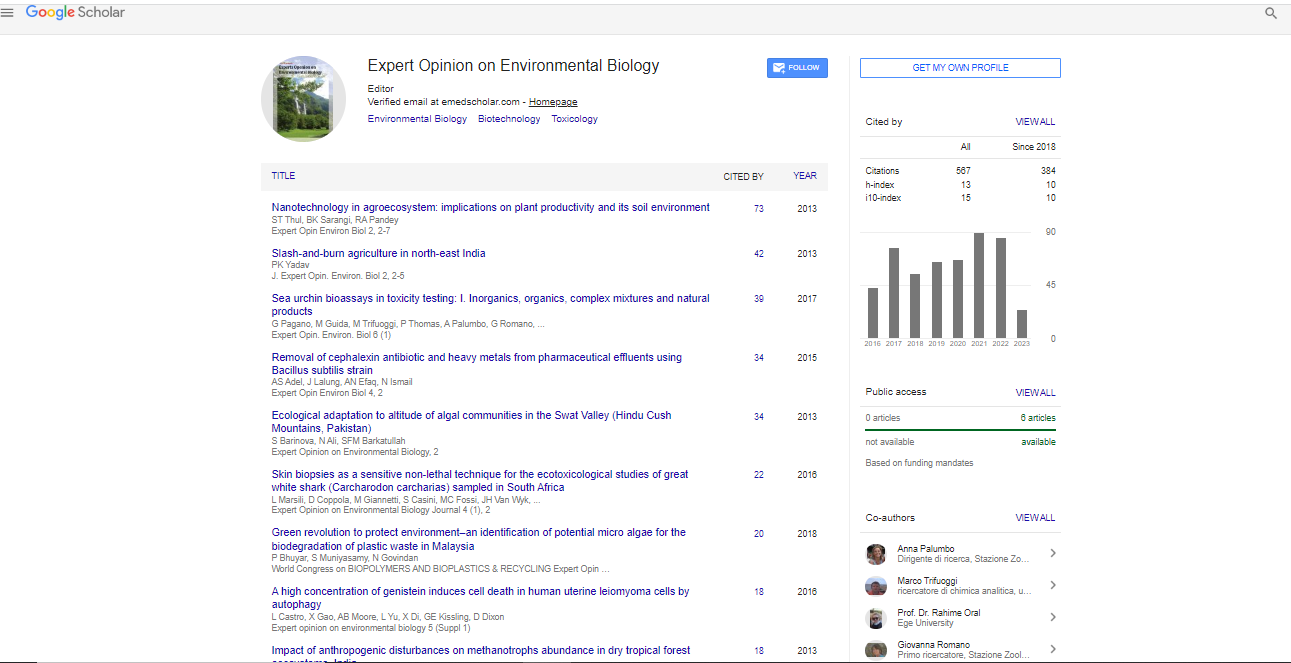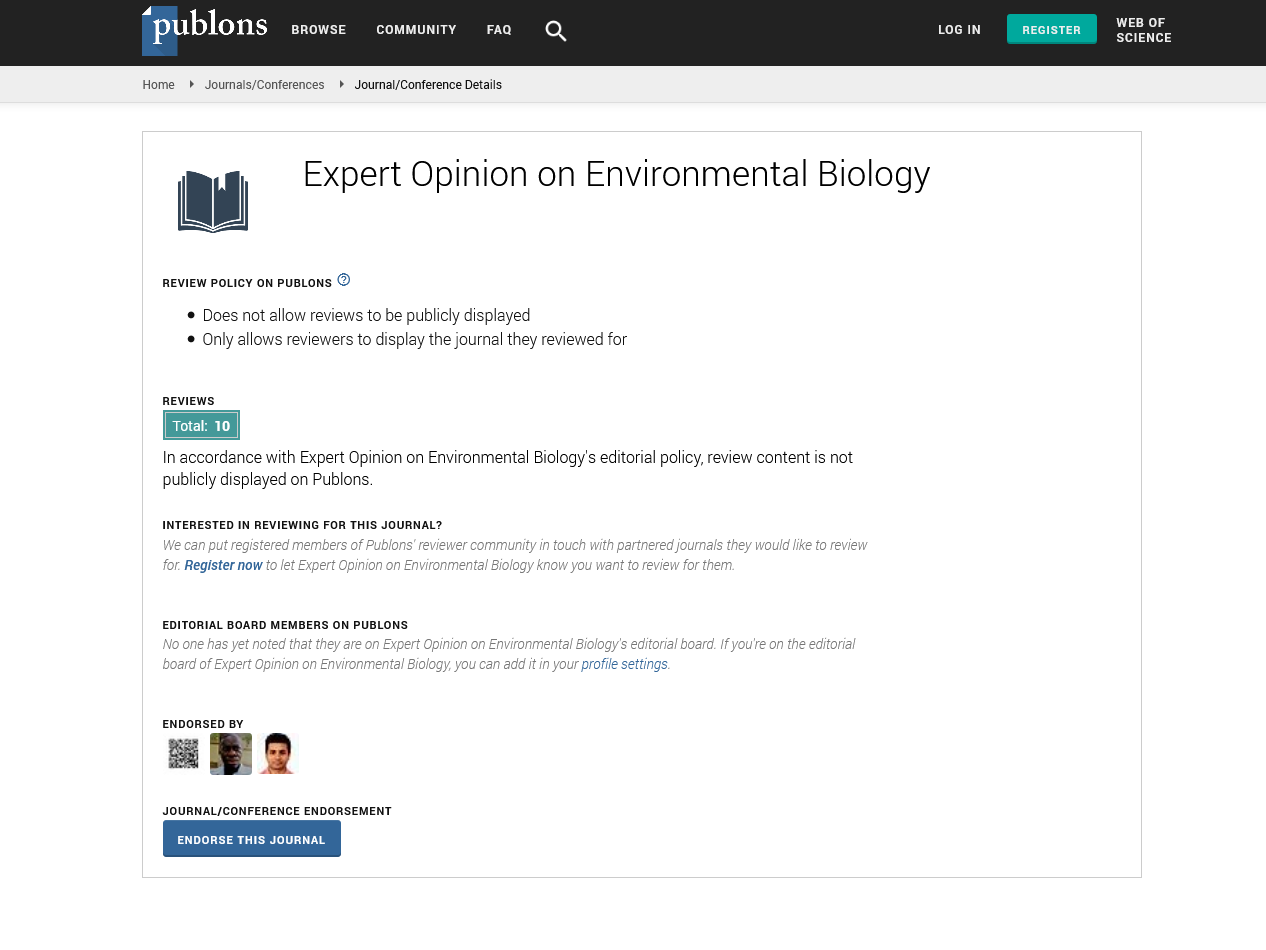Potentials and cost of carbon dioxide removal options
Chirag Bhimani
Sustainability and Climate Change Expert, India
: Expert Opin Environ Biol
Abstract
In 2015, nearly 190 countries came together in the historic Paris agreement to take action in minimizing the impacts of climate change. However, even with the consensus to cut carbon emissions, the continued trajectory of global emissions will push global temperatures 2°C past preindustrial temperatures. Implementation of Carbon Dioxide Removal (CDR) options is a way to meet the target. Through an extensive review, ten CDR/storage options were examined to gain a better understanding of the current state of research regarding the CDR potential of each option and their relevant costs, as well as the feasibility of their implementation. It was concluded that all options require significant further research, a second major objective was to highlight where major gaps in research exist in order to help guide further inquiry in CDR options. Every option was examined extensively and I present my findings regarding the CDR/storage potential and economic costs collected for each option. In addition, I have included a discussion of the technical or natural process, geographic restrictions, policy implications, benefits and risks associated with the implementation, as well as recommendations for further research. The biggest takeaways from the review is that this set of CDR options offer enough removal potential to warrant equal consideration to other emission reduction measures, all options face limitations and uncertainties so a diverse portfolio of options should be pursued, and implementation should occur in a staged manner, in which options are implemented as they become feasible.
Biography
Chirag Bhimani is working as Sustainability and Climate Change expert in India since 3 years now. Earlier he was working as the Head of Division in the Gujarat Pollution Control Board (State Environment Protection Agency in India). His major areas of interests are Environment and Climate Change Policy, Planning & Data Analytics; Air Quality Management; Climate Change Mitigation; Best Available Techniques (BAT) Reference Documents; Contaminated Sites Remediation and Management and Coastal & Marine Pollution Management.
 Spanish
Spanish  Chinese
Chinese  Russian
Russian  German
German  French
French  Japanese
Japanese  Portuguese
Portuguese  Hindi
Hindi 
